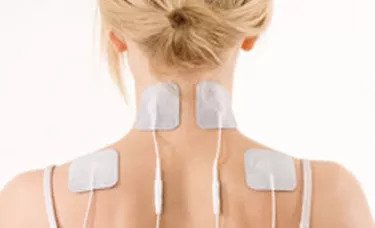

LET US LOOK AT THE BASICS OF THE SPINE
The spine is made up of a combination of bones and soft tissue. The structural basis is vertebrae (separate bones) that sit on top of each other. They can be split into three sections.: Cervical, thoracic, lumbar and are each responsible for different functions.
My friends said I might have a "slipped disc", what does that mean?
In between the vertebrae are "intervetebral discs" hat form a cushioning between the bones to accommodate for the loading stresses that we impose upon our bodies (gravity is one of them!).
The inside of the disc is termed the "nucleus pulposis" it is a gel like substance. In younger people it is well hydrated giving the disc a thick spongy character. Around this is the annulus, this is fibrous and tough and less hydrated.
Sometimes due to repeated stress or sudden trauma injury can occur to the disc causing a tear in annulus and allowing some of the nucleus to leak out of bulge. This is termed a prolapsed intervertebral discs/herniated nucleus pulposis. This condition is more likely to occur in younger populations before the disc loses its hydration. The term slipped disc is actually a misnomer as there is no "slipping" at all!
A "PID" is only one problem associated with the lumbar spine. You should also note that 33% of us actually have a PID without any symptoms so even if your MRI shows a PID this may not be the cause of your pain. In fact MRI/X-ray whilst important for ruling out serious pathologies such as fracture/tumour and spinal cord compression only find the source of the pain in less than 10% of cases.
The Cervical Spine
The cervical spine is largely responsible for movements of our head and neck. The complexity of the cervical spine is high as in addition the nerves that exit at all levels of the spine it also houses the vertebral arteries that wind through the sides of the cervical spine before coming together and supplying the brainstem itself.
As with other portions of the spine injury results from both misuse and disuse. Common disorders in younger populations are whiplash injuries from trauma where as in older people problems stemming from degeneration such as disc disease and formation of osteophyte complexes can lead to pain and narrowing of the space around the nerves. This can lead to upper limb symptoms such as pain, numbness and pins and needles.
Due to the important vascular supply in this area other symptoms such as diverse as difficulty swallowing, dizziness and double vision.
This sounds serious, so do I need surgery?
Some serious pathologies may require surgery. Your physiotherapist will conduct a detailed examination and assessment to screen for serious conditions and will refer you to an appropriate physician as necessary.
The other option - Physiotherapy Management
In our society many problems with the spine can be related to postural and movement dysfunction that arise from our more sedentary lifestyles. Prolonged poor posture and abnormal movement patterns can lead to unequal stresses passing through the spine. This will create some areas of the spine that does to much work and some segments that move less than they should BOTH can lead to pain. Your Physiotherapist will target specific joints for mobilisation and prescribe a tailored exercise programme to gain stability in other areas.
In addition the same dysfunctions can lead to some muscles that are under great stress and others that will weaken this will only compound problems. When a muscle is under repeated stress or sudden injury can it respond by forming areas of heightened sensitivity known as trigger points. The complexity of trigger points is that they can exist in a "non painful" area but when pressed will radiate pain into a specific area which is typically where the patient reports their pain.
Trigger points in the neck and cervical spine dysfunctions commonly cause headaches, which you Physiotherapist will address in their session.
Trigger points will be discussed in more detail its own section below.
The Thoracic Spine - The unsung hero
The thoracic spine is the mid spine or "dorsal" spine. It is made up of 12 vertebrae and is of great interest.
Primarily it should allow for great mobility of the thorax. It also gains stability from its attachments to your ribs and is intimately connected to your breathing via this attachment and its
The thoracic spine also hosts your "sympathetic chain". his is the neural network responsible for many autonomic responses. Autonomic responses are those responses that occur without conscious thought that help maintain the bodies' balance. This includes body temperature, heart rate, respiratory rate, digestion, urination and sexual arousal.
Restrictions in the thoracic spine may just cause pain but often come with some autonomic symptoms as stated above. Restrictions may also cause resultant cervical and lumbar pain as the other two areas of the spine try and compensate for decreased midspine movement.